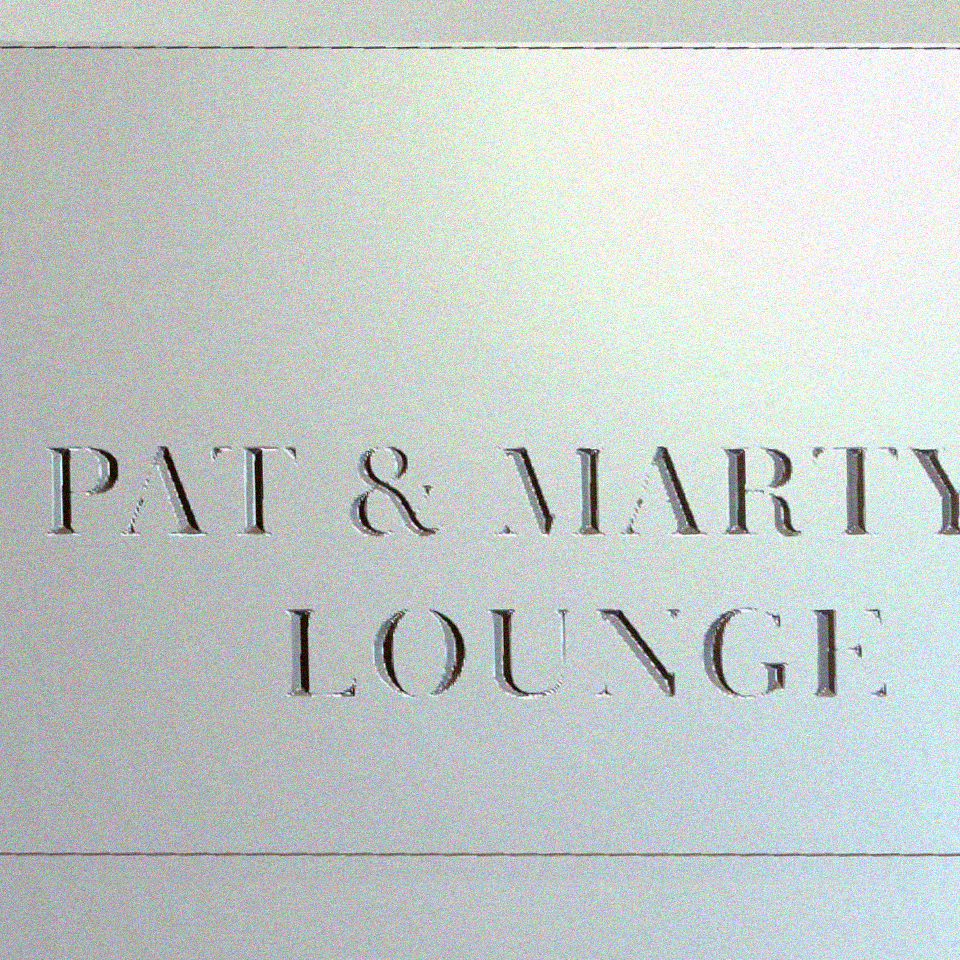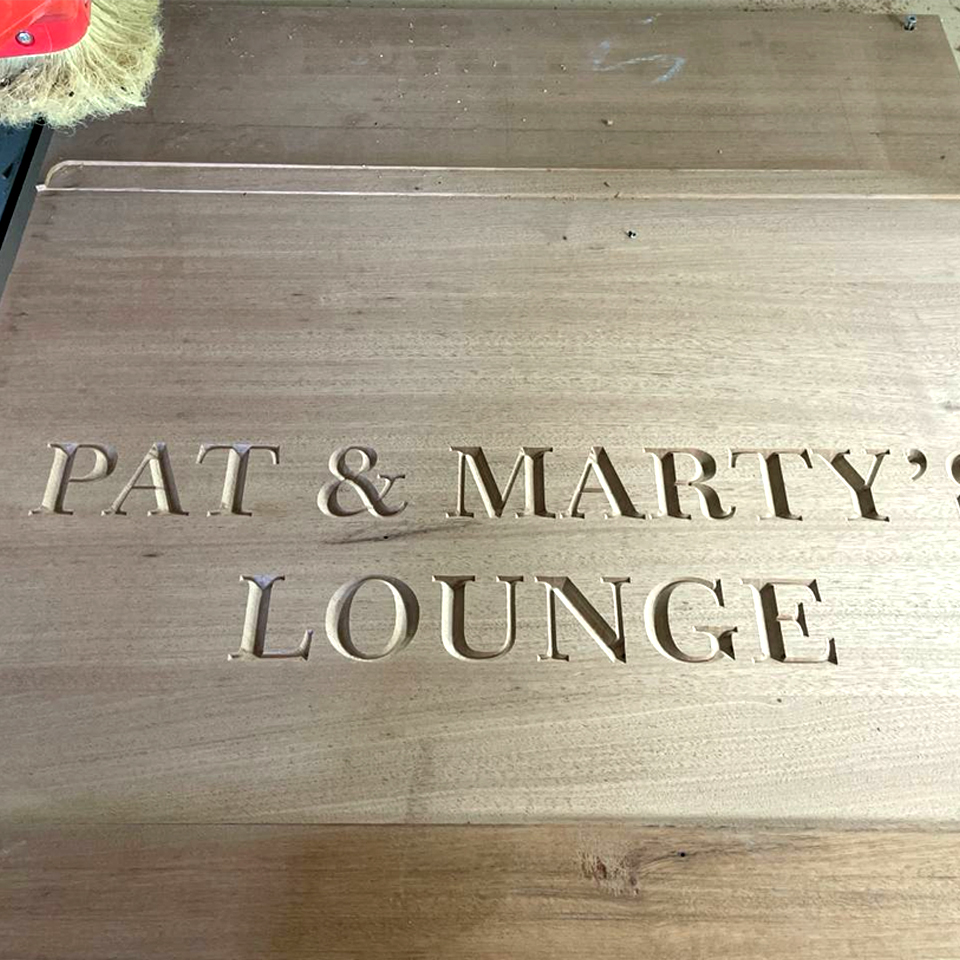




Engraved & Routed Signs
CNC routed signs are created using computer-controlled machinery that allows for highly precise and intricate designs. This advanced technique ensures that every detail of the sign, whether it’s a logo, text, or custom design, is executed with perfect accuracy. CNC routing offers a high level of customization and is ideal for creating dimensional signs that stand out, making it a popular choice for businesses looking for unique and professional signage. The process is efficient, offering consistency and durability, whether for indoor or outdoor use.

Precision in Fabrication
A toolpath refers to the precise route that the cutting tool follows to machine a part from a solid block or sheet of material. Generated by CAM (Computer-Aided Manufacturing) software based on a digital design from CAD (Computer-Aided Design) software, the toolpath guides the router’s movements to achieve accurate cuts, engravings, or shapes in the material.
Contour Toolpaths: These are used to cut along the edges or contour of a part, ideal for creating the outer shape of a sign or intricate internal details. Contour paths are programmed to handle complex curves and edges, ensuring smooth, accurate cuts for clean, professional results.
Engraving Toolpaths: Specifically designed for detailed work such as lettering or decorative designs, engraving toolpaths guide the engraving tool to follow exact patterns, ensuring high detail and precision in the finished design.

Design to Production
V-Carving Toolpaths: V-carving toolpaths are designed for making V-shaped cuts into the material, often used for detailed and artistic text or images on signs. This technique creates a unique depth and shadow effect, adding a dimensional, handcrafted look to the design. It’s ideal for intricate lettering or decorative designs that require precise and visually striking results.
Surface Finish: The quality of the toolpath plays a crucial role in the surface finish of the cut material. A well-planned and executed toolpath ensures a smooth and clean finish, minimizing the need for additional post-processing or finishing work. This results in a higher-quality final product with fewer refinements required.


CNC routing is significantly faster than traditional handcrafting
CNC routed signs represent the perfect fusion of technology and craftsmanship, providing robust, detailed, and versatile signage solutions. Whether you are looking to enhance your business facade, guide visitors through your facility, or make a statement at an event, CNC routed signs offer a professional and tailored approach to your signage needs. With their precision, durability, and wide range of material choices, these signs can be designed to perfectly match your branding and decor, making a lasting impression on all who see them.
High-Density Urethane (HDU)
HDU is a synthetic foam material widely appreciated for its fine, closed-cell structure, which provides strength, versatility, and resistance to weather conditions, making it a popular choice for outdoor signage.
- Durability: HDU is water-resistant, preventing rotting, warping, or swelling. It’s also resistant to insects, making it ideal for outdoor signs in any climate.
- Ease of Fabrication: HDU is easy to carve, machine, and paint, allowing for smooth finishes and intricate details without showing natural imperfections like wood.
- Consistency: Unlike wood, HDU has no grain or knots, ensuring a uniform texture and performance across the sign.
- Lightweight: Lighter than most types of wood, HDU simplifies installation and allows for larger signs without the need for heavy structural supports.
- Aesthetic Limitations: HDU doesn’t have the authentic wood grain texture, which may be important for projects where a natural wood look is preferred.
- Cost: HDU can be more expensive than some common types of wood, raising the upfront cost for sign production.
Wood
Wood is a traditional sign-making material that is highly valued for its natural beauty and timeless appeal, making it a popular choice for various types of signage.
- Aesthetics: Wood provides a warm, organic look that is especially appealing in settings such as historic districts, rustic environments, or nature reserves.
- Customizability: Wood can be stained, painted, and finished in a variety of ways to either enhance its natural patterns or achieve a specific look, making it a versatile choice for many design styles.
- Strength and Rigidity: Certain types of wood, like cedar and redwood, offer excellent durability and can support larger signs with less material, making them a sturdy option.
- Traditional Appeal: Ideal for businesses looking to incorporate a natural or classic aesthetic into their signage.
- Maintenance: Wood requires regular maintenance to prevent weathering, decay, and insect damage. Without proper treatment, the signs may need frequent upkeep, increasing long-term costs.
- Variability: As a natural material, wood can vary in density, grain, and color even within the same species, which may affect the uniformity of multiple signs.